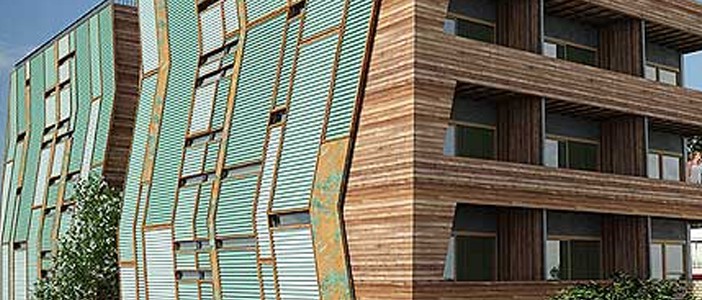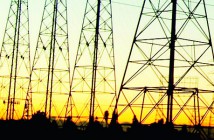Residential buildings in Australia are responsible for 13 per cent of the nation’s greenhouse gas emissions. In fact, Australia is one of the largest emitters of residential greenhouse gas emissions in the world.
And the news gets worse when we examine emissions predictions. If we ignore the dire warnings from the international scientific community and continue to take a ‘business as usual’ (BAU) approach to development, greenhouse gas emissions in the residential sector are expected to rise by 1.3 per cent per annum – or 78 per cent between 2005 and 2050. Clearly, without changes in the way that buildings are designed and used, the residential sector will be a major contributor to climate change.
Recognising the urgency of greening our building stock, the Green Building Council of Australia (GBCA) launched the Green Star environmental rating system for buildings in 2003. Green Star evaluates the green attributes of building projects based on nine criteria, including energy and water efficiency, indoor environment quality and resource conservation.
The GBCA now has a suite of Green Star tools for a range of building types – from commercial offices and retail centres through to hospitals, schools and multi-unit residential facilities. The Green Star – Multi Unit Residential rating tool v1 enables building owners and developers to minimise the environmental impacts of their developments, reduce Australia’s greenhouse gas emissions and deliver health benefits and financial savings for building occupants.
In the residential sector, emissions reductions can be achieved through energy efficient lighting, refrigeration, heating and cooling and through greater use of natural light. In addition, adoption of more efficient hot water appliances with solar where possible, installing better insulation and selecting appliances with a low standby energy use can make a significant impact on energy consumption.
The first Green Star rating in the residential sector was awarded in May 2009 to “The Summer” in Western Australia, for its 4 Star Green Star development. Leading the way in sustainable residential design, this 36- unit project on South Beach Promenade in South Fremantle demonstrates that residential developments can achieve high environmental outcomes without sacrificing occupant comfort. This is achieved through simple design features that utilise the ocean breeze and regulate heat generated by the sun. Eliminating air conditioning is expected to reduce greenhouse gas emissions by 88 per cent alone.
Through passive design strategy, over 90 per cent of units have open floor plans and provide dual aspect to allow for natural cross-ventilation, recirculating air throughout the units and common spaces. The building also incorporates moveable screens on balconies to provide solar shading in the warmer months.
Upon completion, The Summer will include energy efficient appliances as well as rainwater storage. These initiatives will lead to significantly reduced operating costs for both the building owners and the tenants within each apartment. Energy consumption in The Summer is predicted to be 52mj a square metre for the whole building – less than half that of standard apartments which meet the minimum BCA code.
Buildings don’t have to be new to be green. Green features are a smart investment in any residential building, with a fast payback time ensuring owners save money in the long-term. The Green and Save website (www. greenandsave.com/homeremodeling) provides return on investment (ROI) calculations which clearly demonstrate the payback of green developments:
• A green ‘tune up’ has a payback time of around 1.2 years. Simple measures such as installing compact fluorescent lighting and water efficient shower heads, sealing duct leaks and purchasing an energy efficient dishwasher can provide a 96.5 per cent return on investment over ten years.
• A ‘green remodelling’ project – such as improving insulation and window treatments, replacing inefficient water heaters and installing a greywater system – will cost more but the return on investment will be 26.8 per cent over ten years, with a 4.2 year payback.
• An advanced green renovation program which embraces leading edge technology and green design will still have a payback period of just 8.7 years – and will provide a 11.8 per cent return on investment over twenty years. So, what can strata managers do right now to green their buildings?
The first step is to conduct an audit of your building. You have no idea of how your building is performing until to you measure it, so track your building’s energy consumption. Review your building’s management system and look at where you can make improvements. Consider a retro-commissioning of the building’s systems which can address a variety of inefficiencies.
Replace inefficient incandescent light globes with compact fluorescent lighting, consider installing lighting zoning to ensure that only occupied areas of the building are lit, and examine the lighting density and lighting levels to ensure spaces are not over-lit. Remember that the ‘greenest’ energy of all is the energy that doesn’t get used in the first place.
Also, examine your air conditioning. While many buildings maintain an all-year-round temperature of 22.5°C, adjustments to 24°C in summer and 21°C in winter can yield significant energy savings.
Perhaps most importantly, communicate with your tenants. Explain to your tenants why you’re making adjustments to the way your building performs and what it may mean for them. You’ll find the vast majority of people want to be part of the solution to climate change. – See more at: http://www.stratavoice.com.au/blog/environment/26-green-stars-for-residential-bu/#sthash.HjR5xcjL.dpuf



